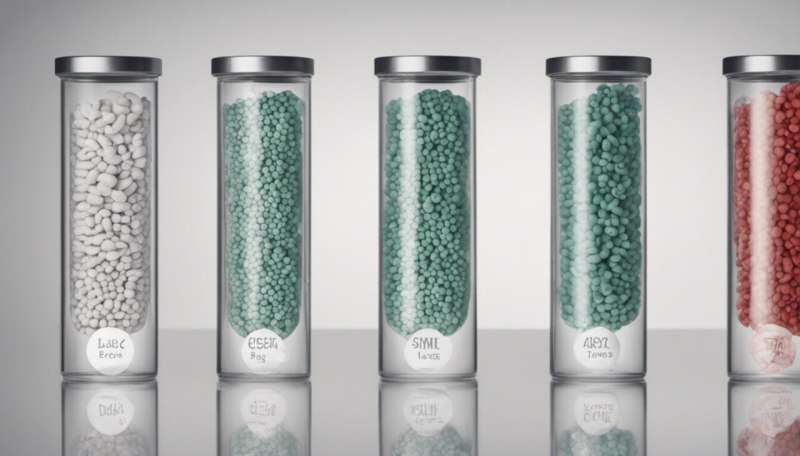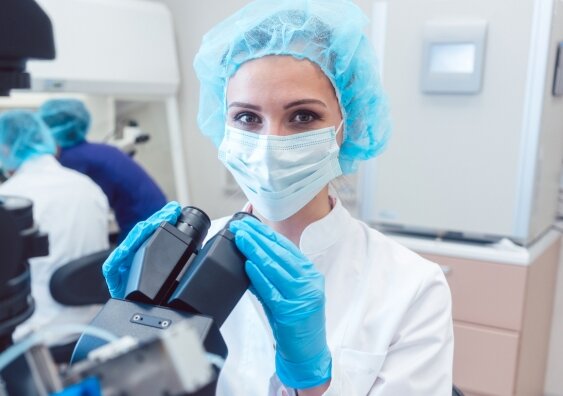
In 2020, one in three IVF cycles undertaken by couples trying to conceive was due to male infertility or a combination of male and female infertility, a new report by UNSW Sydney medical researchers shows.
The underlying reason for the male infertility was unknown in more than 75% of cases. Previous vasectomy was the reason for IVF in 7% of cycles undertaken for male infertility, while 2.4% used assisted reproductive technology (ART) after cancer treatment in the male partner.
“In the past, the focus of fertility treatment was almost always on the female patient, despite a man being equally needed to create a baby. Now that we are collecting data on the cause of male infertility, we can finally study its impact more closely,” said Professor Luk Rombauts, the President of the Fertility Society of Australia and New Zealand (FSANZ).
“The fact that over 75% of male factor is ‘unknown’ reflects our lack of understanding of the reasons for poor semen quality. It highlights the need for further research and education in the determination of the causes. It’s quite likely that genetic studies will reveal new risk factors that can lead to male infertility.”
For the first time, the Australian and New Zealand Assisted Reproduction Database (ANZARD) has collected data and reported on the causes of male infertility for couples undergoing IVF. In addition, there is more detailed information on the types of patients undergoing IVF and more information about pre-implantation genetic testing (PGT) and the reasons for freezing eggs to preserve future fertility.
Increase in ART cycles on 2019
There were almost 96,000 ART treatment cycles performed in Australia and New Zealand in 2020, resulting in the birth of 18,462 babies.
“This represents a 7.6% increase in cycles on 2019, with one in 18 babies born in Australia now conceived through IVF treatment,” said Professor Georgina Chambers, from UNSW Medicine & Health and lead author of UNSW’s “Assisted Reproductive Technology in Australia and New Zealand 2020 (ANZARD)” report.
“The number of cycles may have been affected by the COVID-19 pandemic, with IVF services limited in some states,” Professor Chambers said.
“Fourteen percent of females undergoing IVF in 2020 were in same-sex relationships or were single women, indicating how important access to IVF is for many less traditional families.”
In Australia and New Zealand, the multiple birth rate—the proportion of twins and triplets born through IVF—decreased from last year, a previous record low, and is one of the lowest rates worldwide.
Over the last decade, the multiple birth rate has decreased from 7.9% in 2010 to 2.8% in 2020. This improvement has been driven by the increased proportion of IVF cycles where only a single embryo is transferred, up from 70% in 2010 to 93% in 2020.
PGT is performed to screen embryos during IVF for chromosomal errors and genetic diseases. Approximately 8% of treatment cycles undertaken in 2020 used PGT. Most of these cycles were undertaken by women in their 30s (67%), and about one in four (27%) were in women aged 40 years and over. Where PGT embryos were transferred, the success rate ranged between 22.4% and 47.2% per cycle depending on female age, with the highest live birth rate in women aged under 30 years.
Petra Wale, the Vice President of the FSANZ, said that the detailed information obtained about PGT shows preimplantation testing for aneuploidy (PGT-A), which is an abnormal number of chromosomes, was the most common indication for PGT in 2020. However, the increased use of reproductive genetic carrier screening programs for severe genetic conditions has fueled awareness of PGT. As a result, PGT for heritable genetic disorders and chromosomal abnormalities could increase.
The overall live birth rate per embryo transfer has increased from 26% in 2016 to 29% in 2020. It was higher in younger women—the live birth rate per embryo transfer was around 36% for both fresh and thaw cycles in women aged between 30 and 34 years. In women older than 44 years, the live birth rate per embryo transfer was 1.2% for fresh cycles and 7.7% for thaw cycles.
In 2021, UNSW developed the YourIVFSuccess website which includes a Patient Estimator that allows patients to estimate their chances of successfully having a baby using IVF based on their individual characteristics. It also includes a searchable database of the success rates for all accredited IVF clinics in Australia.
Key stats from the 2020 ANZARD report
- There were 95,699 ART treatment cycles reported from Australian and New Zealand clinics in 2020 (87,206 and 8,493 respectively) representing increases of 7.6% in Australia and 7.8% in New Zealand from 2019.
- Of the 95,699 initiated ART cycles, there were 18,462 babies born (16,439 from treatments performed in Australian clinics and 2023 from New Zealand clinics).
- For couples trying to conceive, 20% of IVF cycles were undertaken due to male infertility and 11.2% were due to a combination of male and female infertility.
- In 2020, there were 7714 PGT cycles, of which 5159 were undertaken by women in their 30s and 2111 undertaken by women aged 40 years and over.
- Women used their own eggs in nearly 95% of cycles in 2020; 57.5% were fresh cycles and 37.1% were thaw cycles.
- The live birth rate per initiated cycle was 16.2% for autologous fresh (excluding freeze-all) cycles and 30.7% for autologous frozen/thaw cycles.
- Single embryo transfer rates have increased from 70% of embryo transfer procedures in 2010 to 93% in 2020.
- The multiple birth rate has decreased from 7.9% in 2010 to 2.8% in 2020.
Source: Read Full Article
